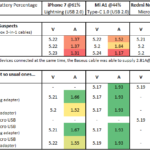The introduction of standard deduction in FY2019 lieu of transport allowance and medical reimbursement is unanimously portrayed as being beneficial to employees, at least by HR personnel. To a large extent that is true, even though the mention of the additional 1% education cess is conveniently omitted.
However, I had a query from a lesser financially inclined colleague of mine about the extent of benefit that this change brings about. Considering my past example of helping out colleagues and my interest in economics and taxation, I decided to get cracking on preparing a spreadsheet capturing the difference in taxation in FY2019 over the past financial year based on these specific changes. It is a simplistic model created in a few minutes for the purpose of understanding. It considers the taxable income to be the income post all exemptions apart from the ones that are part of the subject matter.
As can be seen by the graph, benefit is a subjective consideration but it is helps to be an optimist. The crossover happens at ₹12,64,000, so I assume a large proportion of the population would be happy about the change, especially if they couldn’t produce the necessary medical bills in the past years for reimbursement. The maximum benefit of ₹1070 is, of course, at a taxable income of ₹5,40,000 which would have been in the 20% bracket in FY2018 compared to the 5% bracket in FY2019.
The spreadsheet, formatted for Google Sheets can be accessed here.



